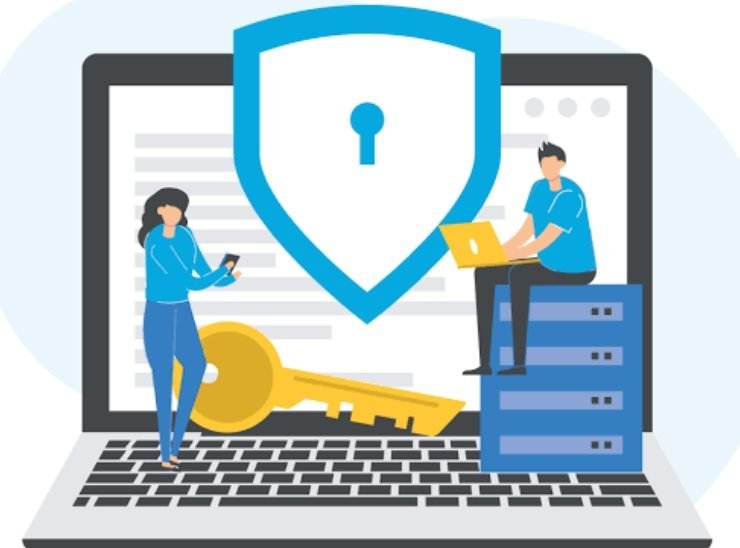Table of Contents
Discover top strategies to shield your PC! Learn crucial protection methods for a secure system. Keep on reading for more information.
In an increasingly connected digital landscape, safeguarding your personal computer is more critical than ever. Cyber threats loom around every virtual corner, from malware and phishing attempts to data breaches and ransomware attacks.

pc-protection
Protecting your PC demands a proactive approach, implementing a combination of robust strategies and best practices to fortify your defenses. Here, we delve into ten essential strategies to shield your system and keep it secure from potential threats.
1. Install Reliable Antivirus Software
The cornerstone of PC protection begins with a reliable antivirus solution. Choose a reputable software suite that offers real-time scanning, malware detection, and regular updates. These tools act as sentinels, tirelessly monitoring your system for potential threats and neutralizing them before they can cause harm.
2. Enable Firewall Protection
Activate your firewall to create a barrier between your PC and the outside world. Firewalls regulate incoming and outgoing traffic, scrutinizing data packets to block suspicious or unauthorized access. Configuring your firewall settings enhances your system’s resilience against external threats.
3. Keep Operating Systems Updated
Frequent system updates and software patches are not mere suggestions—they are crucial defenses against evolving vulnerabilities. Regularly updating your operating system and applications bolsters your PC’s security, patching known weaknesses and fortifying its overall resilience against potential attacks.
4. Implement Strong Passwords
Crafting strong, unique passwords remains a fundamental yet often overlooked aspect of PC security. Combine alphanumeric characters, symbols, and varying cases to create robust passwords for each account. Password managers can aid in generating and storing these intricate passphrases securely.
5. Enable Multi-factor Authentication (MFA)
Add an extra layer of security to your accounts by implementing multi-factor authentication. MFA requires additional verification beyond passwords, such as biometrics or one-time codes sent to your mobile device. This supplementary step drastically reduces the risk of unauthorized access.
6. Regularly Back Up Data
Data loss can be catastrophic in the event of a cyberattack or system failure. Regularly back up your crucial files and data to external drives or secure cloud-based services. This preventive measure ensures that even if your system is compromised, your important information remains intact.
7. Practice Safe Browsing Habits
Exercise caution while surfing the internet. Avoid clicking on suspicious links, visiting unverified websites, or downloading files from unknown sources. Adhering to safe browsing practices significantly reduces the likelihood of encountering malware or phishing attempts.
8. Use a Virtual Private Network (VPN)
When connecting to public Wi-Fi networks or browsing online, employ a VPN. A VPN encrypts your internet traffic, shielding sensitive data from prying eyes and potential threats. This encryption adds a layer of anonymity and security to your online activities.
9. Exercise Caution with Email Attachments
Emails can serve as gateways for cyber threats. Be vigilant with attachments and links in emails, especially from unknown or unexpected sources. Verify the sender’s authenticity before opening attachments or clicking on links to mitigate potential risks.
10. Educate Yourself and Stay Informed
Cyber threats continually evolve, making education a potent defense. Stay informed about the latest cybersecurity trends, threats, and best practices. Educate yourself and your peers, fostering a culture of awareness and preparedness against potential risks.
11. Invest in a Custom PC Case
When safeguarding your PC, getting a custom PC case is super important. It’s not just about keeping your hardware safe; it can also make your computer work better. With a custom case, you can design it to fit what you need, like improving airflow or adding extra cooling stuff.
The best part? It stops your system from getting too hot and wrecking your computer parts. And let’s admit it, having a cool-looking PC setup is a big bonus! So, keep your PC safe, make it work better, and make it look awesome with a custom case.
Conclusion
Safeguarding your PC demands a multifaceted approach. By implementing these essential protection strategies and staying vigilant, you can significantly reduce the risk of falling victim to cyber threats. Remember, a proactive stance toward PC security is the first line of defense in an ever-evolving digital landscape. Prioritize your system’s protection today to safeguard your digital future.

